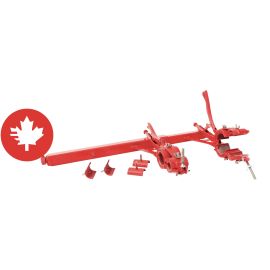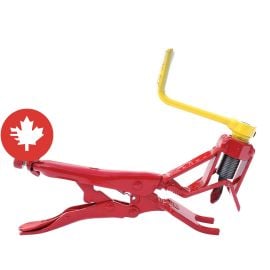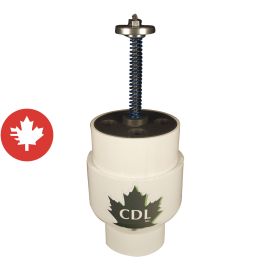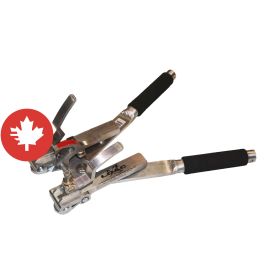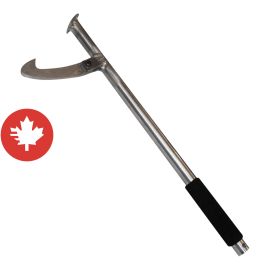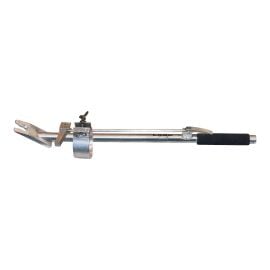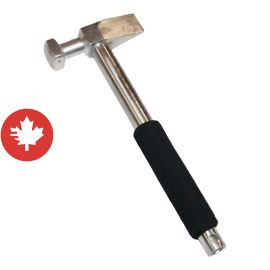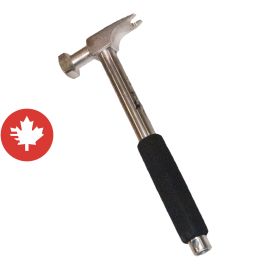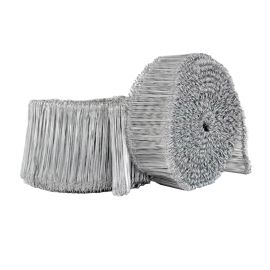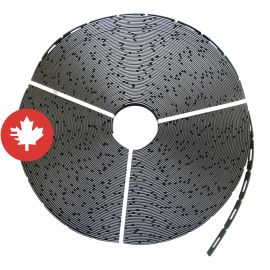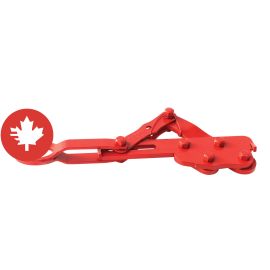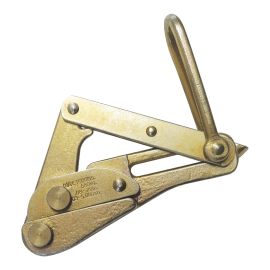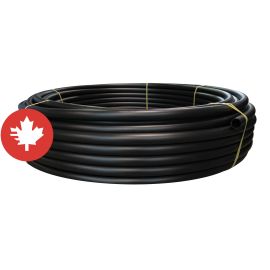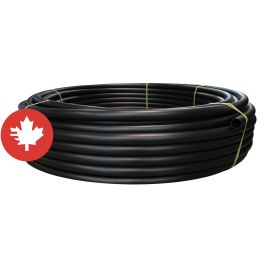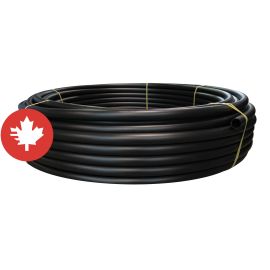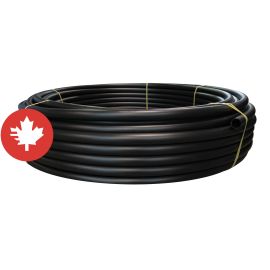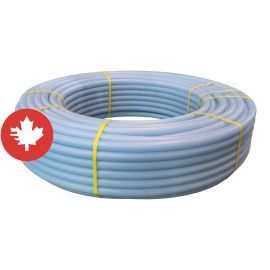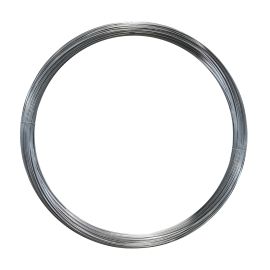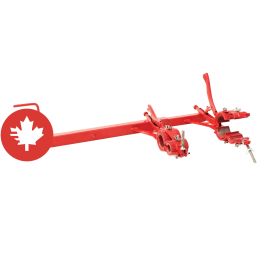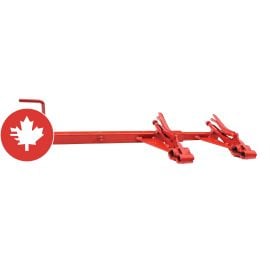Text by Christian Gosselin, CDL product manager - Forest Division
A healthy tubing system means maximum return on your investment. Here are a few tips to help you.
Is it time to replace your tubing?
First, you need to know the age of the tubing and fittings. If you are not sure, consider these key factors in your analysis.
- Have you seen vacuum loss through the years, even with the leaks fixed? If the answer is yes, it means that you have invisible micro-leaks. They are invisible to the eye and impossible to find when you check for leaks because they do not make noise or large bubbles.
- Have you noticed that your 5/16” lines sag and don’t stay straight soon after you bind them? If so, it means your tubing has lost most of its original elasticity, meaning it’s getting old!
- Have you noticed that some of your mainlines are becoming brittle in the winter? Or that they are hard to clean properly? These 2 factors usually show that it’s time to replace your mainline.
Ideally, do these verifications on a few strategic sections of the sugarbush to evaluate if it’s time to replace part or all of your tubing system.
On average, tubing is replaced after 10 to 15 years, at the same time new trees are tapped.
How to prepare a new installation
Good planning is the key! Before anything else, you have to do an inventory of the entire infrastructure. Map the sugarhouse, all the other buildings, pumping stations and power hook ups. Do you have enough? Are they in the right position? Are they still functional? Plan for short and long term, if you want to add more taps eventually, for example.
Then, analyze the evolution of the forest since the last tubing installation to optimize the new layout. For example, are there dead trees to take down, and more importantly, where are the new maples that can be added now or in the future? This is the best time to think about it.
Then, you need to consider the natural elements of the sugarbush like slopes, roads, and brooks because they will have an impact on the final layout. During the off-season, take the time to walk the woods, analyze the topography to understand how the network is impacted, and fix problems that have been there for a while.
Keep in mind, there are tools that can help you plan. You can map your tubing layout using softwares like Google Earth, Google Map or GIS for example. To determine slopes, get a hypsometer or a pocket level.
How to draw your network?
Keep an open mind at this stage, there can be many options. You just have to do a good analysis to make good decisions. Think long term, consider future taps. Do not set up equipment to the limit of their capacity. To get good vacuum and good flow, you must plan for the largest sap flows (usually when the system breaks loose in the morning).
Here’s a simple method to help you draw your tubing network:
- Draw a map.
- Place your sugarhouse, pump stations and power entrance.
- Identify slopes.
- Draw the mainlines.
- Evaluate tubing, fitting and spout needs.
- See if the existing equipment meets your needs and consider new technologies.
Which 5/16” to choose?
The first thing to consider is the stiffness of your tubing. CDL offers different degrees of flexibility on 5/16” tubing: rigid, semi-rigid and flexible.
The operation temperature of the tubing, determined by altitude, orientation and weather is the most important factor to consider when choosing the colour. Do you know the range of temperature in your sugarbush?
The colour of the tubing has an impact on the production. We recommend a lighter colour like blue or green for a warm bush. Absorbing less UV rays, the tubing won’t overheat and bacteria growth won’t be as fast. For colder bushes, use a darker colour like a shadow grey or a dark blue so the line thaws faster. You can use different colours in different locations, with lighter colours for south- facing slopes and darker ones for north-facing sections. Using a different colour than the one that is already there is also a good way to easily identify the new sections from older sections. The same principle applies for both mainline and 5/16”.
The see-through property of the tubing is also important to leak check efficiently.
To choose your mainline, you should figure the slope to your sugarhouse, the type of layout (straight or more winding), as well as the type of installation. Think about using the CDL pre-lashed mainline. It does not need to be wire tied, can save you time and labor and provides an easy, one-step installation.
Which spout to choose?
There are many types of spouts available. Some are designed to stay in the woods for years, other models are designed to be replaced every year. Recently, new models like the CDL Signature 3 offer the best of both worlds and are developed to maximize production for up to 3 years before needing to be replaced. It is important to make your choice considering the frequency you want to replace them, as well as the level of vacuum you hope to achieve. Some spouts are more suitable for high vacuum systems.
Consider the health of your trees and tap healing when choosing your spouts. The smaller the spout, the smaller the scar in the tree and the faster the healing. So, if your trees are not health and show several scars, consider ¼” spouts instead of 5/16”.
The color of the spout is also important for maximum performance. Did you know that white spouts flow 7% more than black ones? The white ones stay cooler, slowing down bacteria growth. Also, a new spout will always run more than an old one.
Source : Acer Center
Installation advice
5/16” tubing installation can be done all year long. However, installing in cold weather is harder and slower. Do not overstretch the 5/16” tubing and never stretch mainline because stress in the lines could cause premature aging and breakage in cold weather.
Finding leaks and repairs
The best advice: walk your sugarbush! The time spent inspecting your tubing network will give you better production. Even if you have a CDL monitoring system that helps you find leaks, those leaks won’t fix themselves. It is imperative to know your sugarbush and to spend time walking your lines inside and outside of the sugaring season.
Did you know that each additional inch of mercury above 23 gives you 5% more sap? Above 26, each inch increases production by 6.33%.
Source : Acer Center.
Maintenance
To keep your tubing bacteria free, it is important to keep it clean. In Canada, 70% isopropyl alcohol is recommended. Suck in 15 ml of alcohol through each spout to sterilize every line. Always start with the last 5/16” line on the mainline and the last tree on each line 5/16” line, that way, there won’t be any sap left in the lines when you are done. Alcohol vapors will keep working during the summer, keeping your lines clean.
To completely sterilize your spouts, you can add different sterilization caps that adapt to your tees. A sterile cap will also help maximize sap production.
Need more advice? Visit your BMR or Agrizone dealer to talk to and expert, or write us and email at [email protected].
